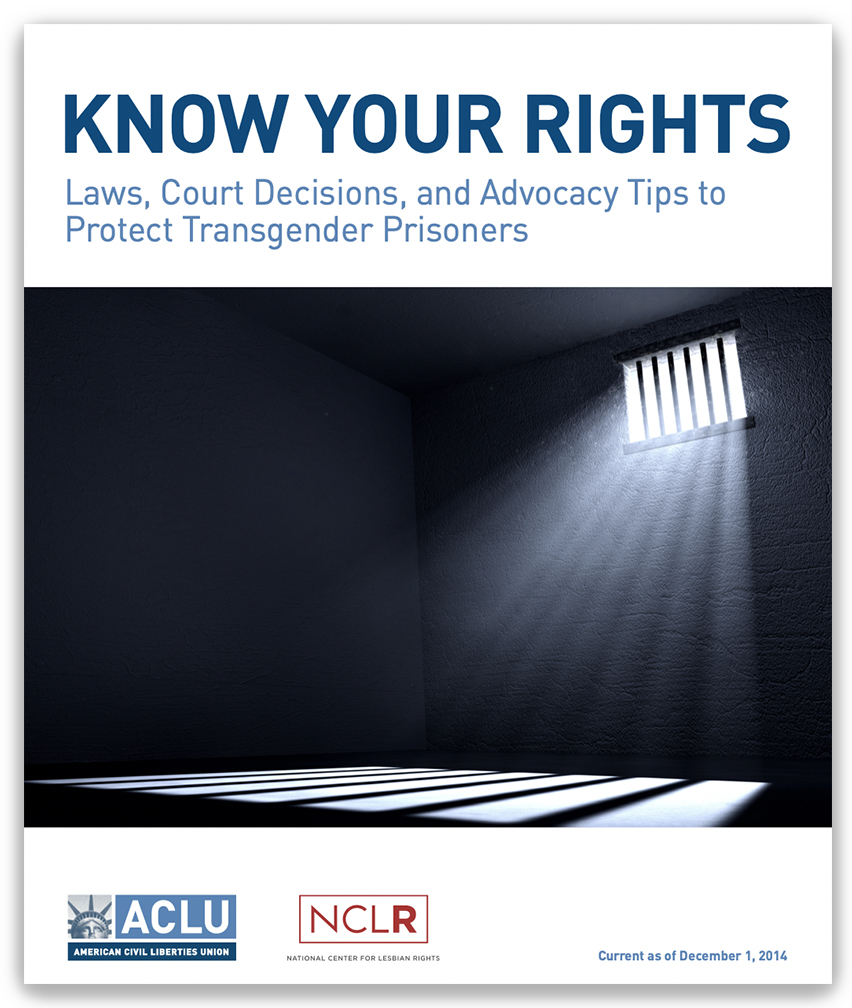We post news and comment on federal criminal justice issues, focused primarily on trial and post-conviction matters, legislative initiatives, and sentencing issues.
We have been out for the past 10 days for some needed medical work. Glad to be back.

TRANSGENDER INMATES PROTECTED BY ADA, 4TH RULES
In a case with significant implications for the Bureau of Prisons, the 4th Circuit last week held that gender dysphoria is covered by the Americans With Disabilities Act.
 Kesha Williams, a man who identifies as a woman, sued the Fairfax County, Virginia, sheriff for being housed with men during a 6-month jail sentence. The sheriff argued that the ADA – which excludes “gender identity disorders” from conditions covered by the Act – does not extend to gender dysphoria (a condition that had not been identified when the Act was passed in 1990).
Kesha Williams, a man who identifies as a woman, sued the Fairfax County, Virginia, sheriff for being housed with men during a 6-month jail sentence. The sheriff argued that the ADA – which excludes “gender identity disorders” from conditions covered by the Act – does not extend to gender dysphoria (a condition that had not been identified when the Act was passed in 1990).
The Circuit disagreed. Relying on the American Psychiatric Association’s Diagnostic and Statistical Manual of Mental Disorders, 5th ed. (DSM-5), the 4th said that
the definition of gender dysphoria differs dramatically from that of the now-rejected diagnosis of “gender identity disorder.” Rather than focusing exclusively on a person’s gender identity, the DSM-5 defines “gender dysphoria” as the “clinically significant distress” felt by some of those who experience “an incongruence between their gender identity and their assigned sex.” And the DSM-5 explains that the discomfort or distress caused by gender dysphoria may result in intense anxiety, depression, suicidal ideation, and even suicide. In short, “being trans alone cannot sustain a diagnosis of gender dysphoria under the DSM-5 as it could for a diagnosis of gender identity disorder under earlier versions of the DSM.” For if a transgender person does not experience “clinically significant distress,” she could not be diagnosed as having gender dysphoria under the DSM-5.
A 2013 update of the DSM that became the 5th edition removed the diagnosis of gender identity disorder, replacing it with gender dysphoria. “Reflecting this shift in medical understanding, we and other courts have thus explained that a diagnosis of gender dysphoria, unlike that of ‘gender identity disorder,’ concerns itself primarily with distress and other disabling symptoms, rather than simply being transgender,” the 4th said.
The Circuit ruled that even if gender dysphoria and gender identity were not categorically distinct, the prisoner would still be protected under the ADA because her gender dysphoria has a “known physical basis.” When prison officials failed to provide hormone therapy to the prisoner, she experienced emotional, psychological, and physical distress. “Williams does not merely allege that gender dysphoria may require physical treatment such as hormone therapy,” the 4th wrote. “She maintains that her gender dysphoria requires it.”
The Circuit said that excluding gender dysphoria from the ADA “would discriminate against transgender people as a class, implicating the Equal Protection Clause of the 14th Amendment.”
The 4th further noted that in 2008, Congress’s amendment to the ADA instructed courts to apply the statute broadly, intending to make it easier for people with disabilities to access protection under the ADA and stating that the definition of disability should be construed in favor of people calling for coverage “to the maximum extent permitted by the ADA’s terms.
The sheriff’s policy classified prisoners’ gender according to their genitalia. That policy, the Court found, violated the Prison Rape Elimination Act (PREA). “A policy that houses transgender inmates based solely on their genitalia puts transgender inmates at further risk of harm,” the 4th ruled.
The BOP estimates that about 1,200 inmates identify as transgender.
Even before this decision, some of the BOP’s 10,800 female inmates have been vociferous in their opposition to having transgender females – most of whom retain male genitalia – from being housed with them. The news last month that a transgender woman inmate housed by New Jersey in a female prison had impregnated two female inmates has raised concerns about transgender inmate housing. None of those concerns will be allayed by the 4th Circuit’s holding.
Williams v. Kincaid, Case No 21-2030, 2022 US App LEXIS 22728 (4th Cir, Aug 16, 2022)
Washington Post, 4th Circuit first to rule gender dysphoria a protected disability (August 17, 2022)
Tucson Sentinel, Appeals Court Ruling on Transgender Rights: What It Means (August 22, 2022)
NBC News, N.J. trans prisoner who impregnated 2 inmates transferred to men’s facility (July 19, 2022)
<><>
– Thomas L. Root

